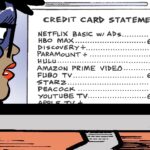 Video is a big part of AOL’s new plans to stage a “programmatic upfront” in the fall (AdExchanger story) and content discovery and distribution platform Taboola is likely to be a big part of that effort. The two companies signed a deal late last month that starts with AOL posts adding Taboola’s “recommendation matrix” of selected videos that a user on a given web page may find equally, if not more, interesting than what they just finished viewing.
Video is a big part of AOL’s new plans to stage a “programmatic upfront” in the fall (AdExchanger story) and content discovery and distribution platform Taboola is likely to be a big part of that effort. The two companies signed a deal late last month that starts with AOL posts adding Taboola’s “recommendation matrix” of selected videos that a user on a given web page may find equally, if not more, interesting than what they just finished viewing.
The premise here is to have users find videos, and the accompanying ads, rather than have targeted ads find consumers.
“AOL has a unique asset – video – that they’ve been building up for the past seven years, through acquisitions like 5min,” said Adam Singolda, Taboola’s CEO and founder. “They manage 620,000 premium videos. That’s great. But the issue is: despite being so well categorized and tagged, how do you get that massive library in front of engaged users? We can predict what content a user may want to consume next – even before they know what they want.”
Keeping users consuming video has been the Tel Aviv/New York-based Taboola’s focus since its launch five years ago. The company has raised $40 million in venture capital in that time — $25 million in the last 12 months, with its $15 million February round. That capital has been put to use in staffing up as Taboola has grown from 35 people last year to over 100 employees now, half of whom are engineers and help support the 2.5 billion daily recommendations it posts to roughly 250 million visitors across its publisher network.
The company has also attracted new partners like AOL, Examiner.com, The New York Times, Bloomberg, TMZ, USA Today and Time Inc. by positioning itself as the “anti-Google.” As Singolda puts it, if you know what you want to see, type it into Google and they’ll serve you just that.
“We are generating a significant amount of revenue from their links of our videos on their pages,” said John Cantarella, president of Time Inc.’s Digital, News & Sports Group, of the year-long relationship the publisher has had with Taboola. “It’s clear to us that their algorithms learn what consumers like to watch. That in turn helps us serve up content based on that.”
Cantarella added, “Secondly, like all publishers we have recognized that content doesn’t just live on our owned sites, we’ve gotten a great deal of traction from Taboola’s distribution. Both in terms of promoting videos on our site and giving them a life elsewhere has come at just the right time for us, as we plan to ramp up our video production.”
In terms building an audience for its distributed videos, Taboola’s approach is fairly straightforward, recognizing that web surfing is a different process than TV channel surfing. Web users like the act of being sucked in to something that hadn’t considered previously, particularly when it comes to snackable, short form content presented in a small box with an attention-grabbing image and a curiosity-stoking headline like “Record-Breaking Burmese Python Caught In The Everglades” or “Clever Frog Makes Leaf Umbrella” or “Don’t Eat These Foods Before Bedtime.”
This kind of impulse-driven approach may not seem like the kind of “premium” high production value sort of video that AOL promoted during its NewFront presentation this past spring, when it rolled out the red carpet for the like of Sex In the City’s Sarah Jessica Parker and other celebs who are producing their own video programs. But those marquee video series obviously make up a fraction of AOL’s video inventory.
As such, Taboola’s business model is strictly based on biddable, cost-per-click performance.
“We love CPC because it is directly related to marketers’ KPIs,” Singolda said. “With a CPM model doesn’t work for the majority of online video content, which is very fragmented. Marketers aren’t going to pay in advance, but they don’t know what’s going get the traffic. We promise to connect content to users by building an audience as opposed to taking an audience and building content for it, like with TV.”
The appeal of CPC is that you know whether the content and the ad resonated fairly immediately and clearly. But as TV and online video converge, that prospect would seem to get trickier. But Singolda dismissed the idea that TV will drastically transform the way online business models work. Instead, he believes performance-based models will hold the greater influence, particularly as the buyers and sellers struggle over metrics.
“Gross ratings points for online make TV buyers comfortable, because it is so familiar to them,” Singolda said. “And other metrics that are being talked about a lot, like viewability, also will help clarify brand awareness and engagement. Ultimately, as the $80 billion TV ad market moves closer to the $4 billion online video market, more metrics will emerge. It will have to because online video is much more vast and differentiated than TV. One-size metrics will not fit. It will have to be a combination and a choice what to use. Part of our goal is to make those choices easier to make.”













